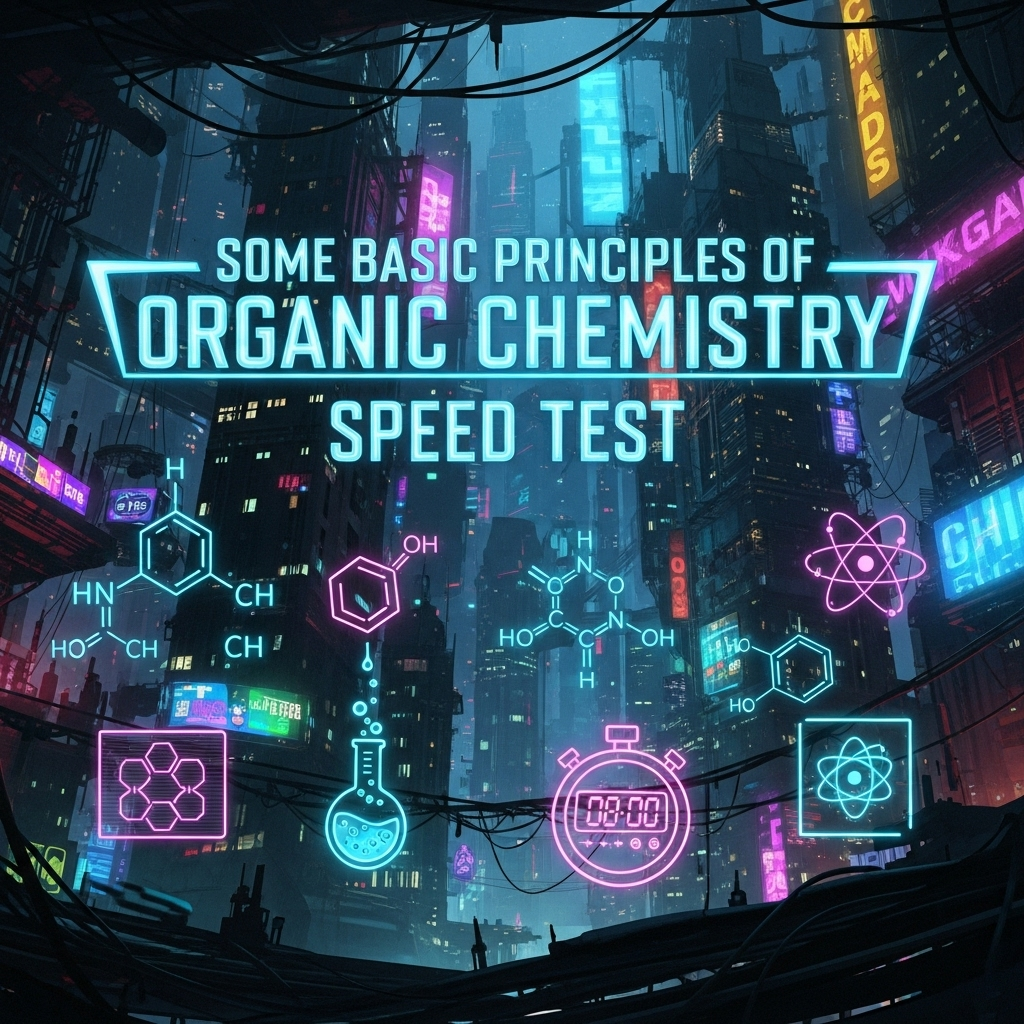Some Basic Principles of Organic Chemistry – Interactive Quiz & Cheatsheet
Understand hybridisation, resonance, and inductive effects in organic chemistry with this learning game
Updated: 3 months ago
Categories: Mini Game, Chemistry, Class 11, Organic Chemistry

Organic Chemistry Basics Cheatsheet
Cheat Codes & Shortcuts
- Definition: Organic chemistry studies carbon-containing compounds.
- Functional Groups: Specific groups of atoms responsible for characteristic reactions.
- Hybridization: Carbon can be \( sp^3 \), \( sp^2 \), or \( sp \) hybridized.
- Nomenclature: IUPAC names based on longest carbon chain and functional groups.
- Isomerism: Compounds with same molecular formula but different structures.
- Alkanes: Saturated hydrocarbons, general formula \( C_nH_{2n+2} \).
- Alkenes: Contain at least one \( C=C \) double bond, \( C_nH_{2n} \).
- Alkynes: Contain at least one \( C≡C \) triple bond, \( C_nH_{2n-2} \).
- Electronegativity: Influences polarity and reactivity of molecules.
- Resonance: Delocalization of electrons in conjugated systems.
Quick Reference Table
| Type | Form | Key Feature |
|---|---|---|
| Alkane | \( C_nH_{2n+2} \) | Single bonds, saturated |
| Alkene | \( C_nH_{2n} \) | Double bond, unsaturated |
| Alkyne | \( C_nH_{2n-2} \) | Triple bond, unsaturated |
| Aromatic | Benzene (\( C_6H_6 \)) | Conjugated ring, resonance |
| Alcohol | R-OH | Hydroxyl group |
| Carbonyl | R-C=O | Ketone or aldehyde group |
Advice
First Step: Identify the functional group to predict reactivity.
Nomenclature: Always find the longest carbon chain for IUPAC naming.
Hybridization: Check bond types to determine \( sp^3 \), \( sp^2 \), or \( sp \).
Resonance: Draw resonance structures for stability analysis.
Verify: Confirm molecular formula matches structure after drawing.
Organic Chemistry Quick Tips
- Functional Groups: Learn key groups like -OH, -COOH, -NH2 for reactivity.
- IUPAC Naming: Number the carbon chain to give functional groups the lowest numbers.
- Isomerism: Check for structural, geometric, or optical isomers.
- Hybridization: Use bond angles: \( sp^3 \) (~109.5°), \( sp^2 \) (~120°), \( sp \) (~180°).
- Reaction Types: Focus on substitution, elimination, and addition reactions.
Organic Chemistry Speed Quiz
Test your speed with 5 organic chemistry questions! You have 30 seconds per question.
Question: 1/5
Time left: 30s
Quiz Complete!
Your Score: 0/5

Group Discussions
No forum posts available.


